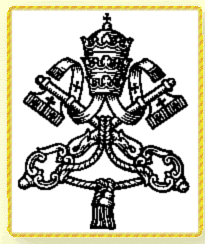The Romeiros are one of the more unique Good Friday traditions here in Fall River. Romeiro is a Portugese word which means pilgrim. The tradition began in the Azores on the island of São Miguel. In 1522, Vila Franca do Campo, the capital at the time, was nearly destroyed by an earthquake and subsequent volcanic eruption. 4,000 of the town's 4,500 residents were killed. 40 years later, the volcano erupted again.
The earliest records of the Good Friday Romeiros date back to those events. The original romeiros were men who travel by foot around the island praying and visiting various churches. They prayed for an end to the disasters and for God to help them and their families deal with the great tragedies.
The tradition still exists as these men spend Holy Week on this pilgrimage. They are offered shelter and food in private homes and churches.
Here in the United States, the pilgrimage has been modified. Rather than lasting 8 days, the pilgrimage takes place early in the morning on Good Friday. Wearing the tratidional attire of blankets and colorful scarves, and carrying long metal tipped walking sticks, they walk through the city praying the rosary and visiting the many Catholic Churches in the city. The pilgrimage is also no long restricted to men. Many women and children take part now. While in the past the women had followed behind the men, women are now also joining the men.
The rosary and all the prayers are chanted with the mestre (leader) leading the litanies and prayers and the rest of the romeiros called irmãos (brothers) responding. Their chant is hauntingly beautiful and has changed little over the last hundred years.
In my city, the romeiros begin their procession at 7 a.m. They walk from church to church and stop at the Cathedral, where they are met by the bishop, around noon. The bishop gives a brief address and blessing to all the pilgrims.
They return to the church where they began their pilgrimage in time for the 7 p.m. Good Friday Liturgy. The Liturgy ends with the procession and burial of Christ. A statue of the dead Christ is placed in an crib-like "casket" and is carried through the streets with everyone from the church following. Two women from the parish are selected to portray the Virgin Mary and Mary Magdelene. Another woman portrays Veronica. At three points along the way, the clacker which was used at the consecration of the Mass on Holy Thursday is sounded. The procession stops as "Veronica" sings from the front porch of one of the homes. She raises the veil with the image of Jesus' face and sings, "Look! Look at the face of Jesus. Look, Look at what they have done to Him!..."
Many women and even men are brought to tears during this procession.
When the procession returns to the church, the statue of Christ is placed in the tomb.
These are the traditions which I was raised with. I was lucky enough to grow up at the parish which is homebase for the romeiros. I have walked with them on their amazing pilgrimage and I was shocked that it wasn't as grueling to complete as I expected. Of course, after it was over I was in pain. I hope these rich traditions are kept alive by the younger generations.
Here is a slideshow with some great pictures from today's pilgrimage.
Subscribe to:
Post Comments (Atom)










No comments:
Post a Comment